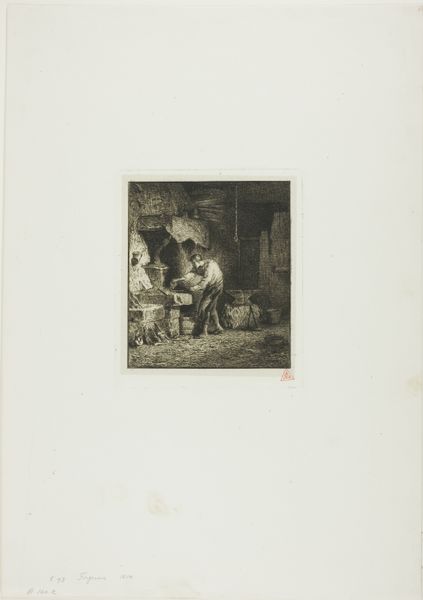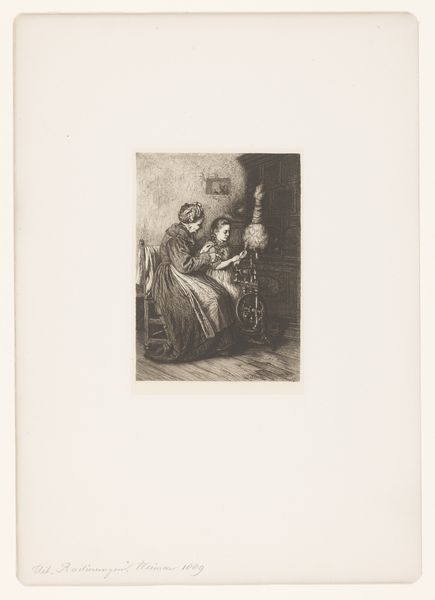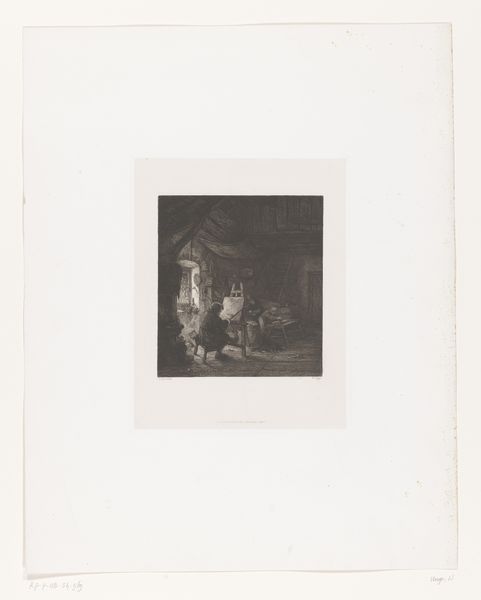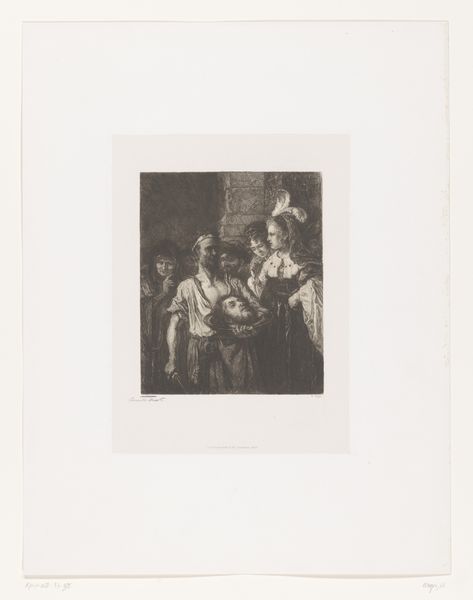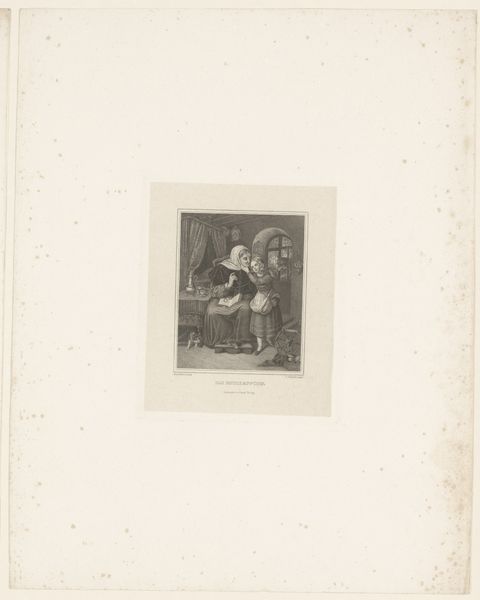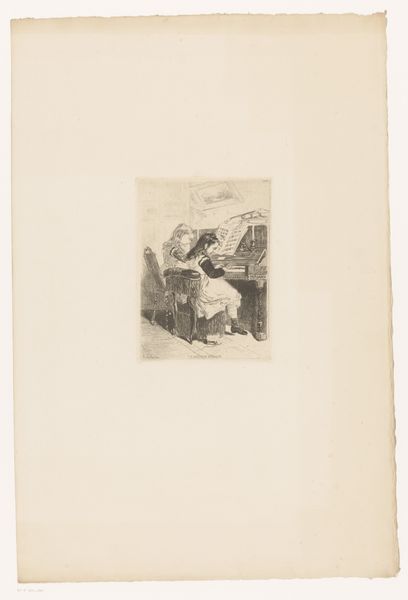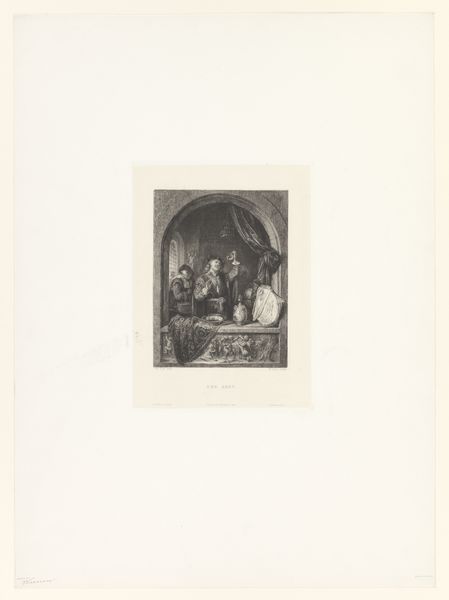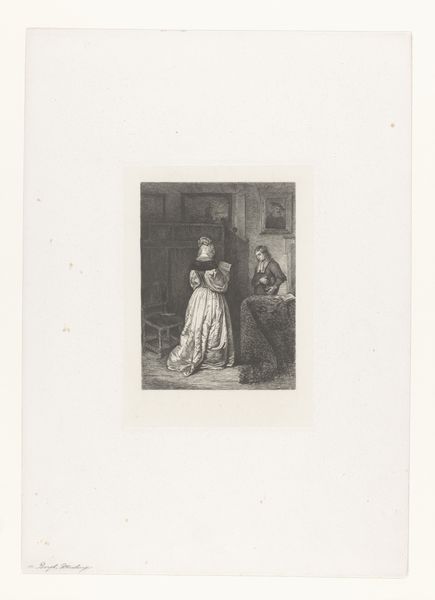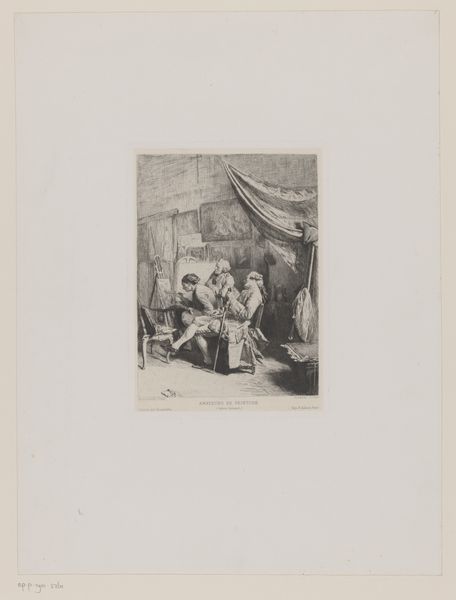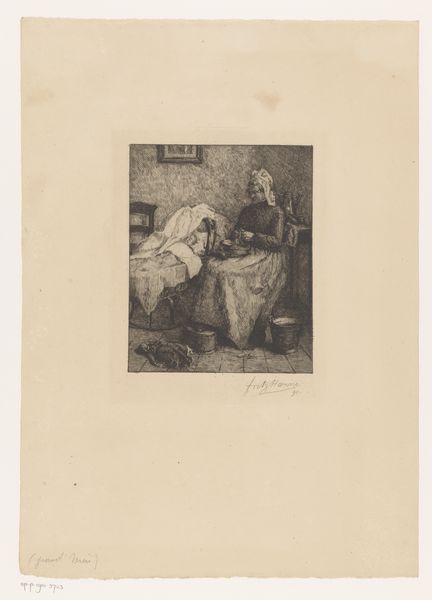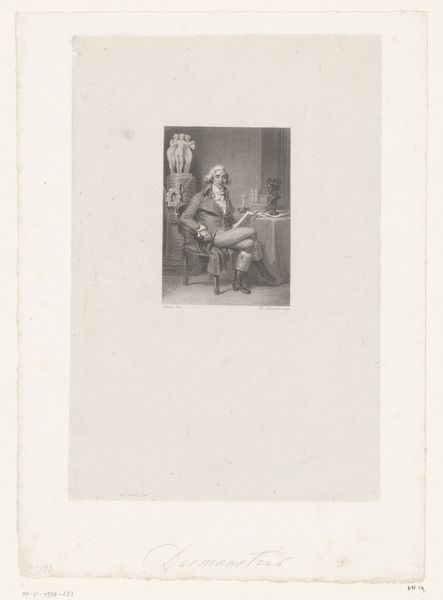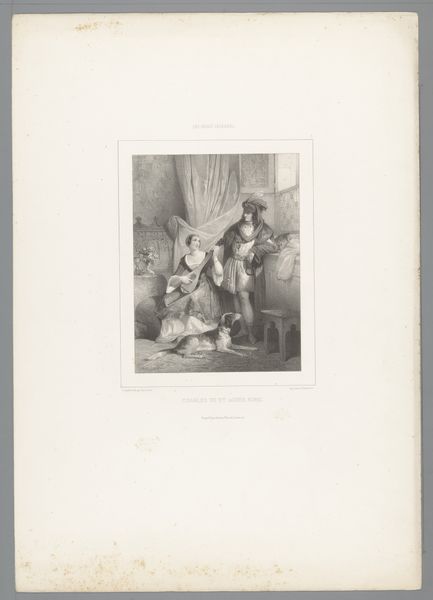
Dimensions: height 428 mm, width 297 mm
Copyright: Rijks Museum: Open Domain
Editor: This is "Man en Vrouw aan Tafel" ("Man and Woman at the Table"), a print made between 1842 and 1863 by Franciscus Bernardus Waanders. It feels very staged to me, almost like a tableau. The engraving is meticulous and quite lovely. What do you see in this piece? Curator: The artist’s command of line is immediately striking. Notice the precision with which each form is rendered, from the cobblestones beneath the table to the delicate tracery of the vines overhead. The interplay of light and shadow, achieved solely through the variation of line weight and density, creates a remarkable sense of depth and volume. Editor: Yes, the gradations are really impressive. Are you drawn to the thematic aspects? Curator: The narrative elements, though present, are secondary to the formal arrangement. Consider the way the figures are positioned in relation to one another and to the objects on the table. Is there a symmetry, or asymmetry, at play? How does that contribute to the overall sense of harmony, or perhaps disharmony, within the composition? Editor: I hadn't thought about the lack of symmetry until you pointed it out. It is subtly off-balance. It seems more realistic because of it, perhaps. Curator: Precisely. The artist manipulates these visual elements not simply to represent reality, but to create a carefully constructed aesthetic experience. The negotiation of balance and imbalance, stillness and movement, all within the confines of a two-dimensional plane, is a testament to the expressive power of form itself. Editor: It is impressive that the story develops through line and tone alone, regardless of the subject. I will keep an eye out for how the structure relates to a sense of depth in prints. Thanks! Curator: Indeed. The absence of color encourages us to focus on the underlying architecture of the image.
Comments
No comments
Be the first to comment and join the conversation on the ultimate creative platform.
